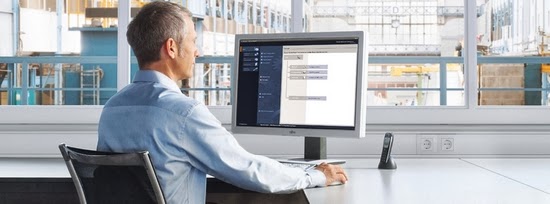Introduction
During the day
An Industrial Engineer is an engineer who works in a factory. His job is to solve any problems which come up when the factory is making a product which has been designed by Design Engineers.
The role of the Industrial Engineer is to effectively and efficiently utilize software technologies, machine tools, math and scientific concepts, and human resources in order to solve problems, provide products or services at minimal cost, and produce on time at the optimum output level to satisfy customer demands.
Industrial Engineers are the world’s best communicators, as they train drivers to understand the importance of production and delivery output, use queuing theory to design on-time package delivery systems, and devise simulations or supply chain tools for their system integration tasks.
Industrial Engineers serve as managers in small and medium sized industries because they understand the management of people and resources, internal and external customer perspectives, effective communication skills, and important business practices and ethics. Most of all, they have the ability to continuously improve the entire system, from working with materials, tools, and technologies to successfully managing staff and human resources.
Role of Industrial Engineer in Garment Industry
Each executive/supervisor has eight areas of responsibility that need to be managed.
Obligations of an executive
To manage effectively, an executive/supervisor should identify and divide his/ her obligations to primary and secondary. He/she must first take care of primary obligations adequately. In some cases this means that secondary obligations will have to be delegated to someone under the supervisor’s authority.
Primary obligations
First thing in the morning Arrive early
…………….How to improve outgoing quality
…………….How to prepare for routine problems or problems that might arise.
The role of the Industrial Engineer is to effectively and efficiently utilize software technologies, machine tools, math and scientific concepts, and human resources in order to solve problems, provide products or services at minimal cost, and produce on time at the optimum output level to satisfy customer demands.
 |
| Roles of Industrial Engineer |
Industrial Engineers serve as managers in small and medium sized industries because they understand the management of people and resources, internal and external customer perspectives, effective communication skills, and important business practices and ethics. Most of all, they have the ability to continuously improve the entire system, from working with materials, tools, and technologies to successfully managing staff and human resources.
Role of Industrial Engineer in Garment Industry
Each executive/supervisor has eight areas of responsibility that need to be managed.
- Safety
- Line balancing
- Quality – operation control
- Training – how to train new employees
- Operator output – maintains high output and improves abilities of those with low output.
- Loss control – minimize off-standard loss
- Waste control – in materials, supplies and machinery
- Standard conditions – in the workplace, in sewing method, in the machines
- Maintenance
- Quality work
- Productivity
- Employee transfers between the operations
- Assigning of off-standard tasks
- Overtime planning
- Rejecting defective product
- Disciplinary actions
- Recommendations for dismissal
Obligations of an executive
To manage effectively, an executive/supervisor should identify and divide his/ her obligations to primary and secondary. He/she must first take care of primary obligations adequately. In some cases this means that secondary obligations will have to be delegated to someone under the supervisor’s authority.
Primary obligations
- Provide safety
- Plan and balance production lines
- Control quality
- Develop employees
- Follow up on low output employees
- Material utilization
- Discipline
- Bundle handling and movement
- Adjustments to machines
- Distributes supplies
- Handle parts that needs reprocessing
- Samples
- Maintenance
- House keeping
- Miscellaneous
First thing in the morning Arrive early
- Greet arriving employees
- Encourage them to start work early
- Check attendance •
- Make adjustments to balance the line according to absence.
- Attend production meeting and discuss yesterday’s results and today’s targets and plans.
- Plan
…………….How to improve outgoing quality
…………….How to prepare for routine problems or problems that might arise.
During the day
- Measure the target vs. actual output every hour
- Check quality level
- Check inline and end line quality reports
- Discuss with quality inspectorsPerform quality drill
- Work with low output operators
- Check proper method
- Motivate and empower operator
- Follow up on new operators in training
- Follow up on operator in re-training
- Identify the bottle neck operations and balance accordingly
- Provide immediate and continuous follow-up to repairs
- Monitor and follow up on bundle tracking and outgoing bundles.
- Authorize any off-standard “clock-out”
- Order supplies and material for production
- Make sure the operators have turned off their machines, cleaned their work area, kept a piece of fabric under the pressure foot, and covered their machine.
- Check and authorize the production work sheet
- Organize production sheets and check the last hour production with the sheet.
- Review the hourly production report and WIP report
- Analyze the next day’s needs and take notes for implementation
- Calculate the next day’s initial inventory according to production information
- Review the capacity studies of low output operators
- Plan operator cross training to solve balancing problems
- Resolve any operator efficiency problems
- Follow up and motivate new employees
- Work out quality problems with quality inspectors
- Work out problems with operators; review the proper method with them when necessary














No Responses to "Roles of Industrial Engineer in Apparel Industry"